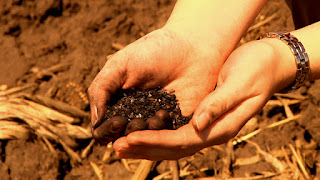UAA professor floats concrete solution to Alaska's road rut problem.
Outside of the Consortium
Library on the University of Alaska Anchorage campus is a concrete slab 8 feet
wide and 20 feet long.
It looks
like your average sidewalk, but it could potentially hold the key to solving a
perennial Alaska transportation problem: road ruts.
For the past 15 years -- and the past eight in Alaska --
UAA professor of civil engineering Osama Abaza has
been developing a road surface that can stand up to Alaska’s road-rut problem.
The concrete slab at UAA is the first practical test of the
solution. Abaza plans to work with the Alaska Department of
Transportation to install a 180-foot lane of the concrete on Abbott Road next
summer.
“I’m not
going to say we have the magic solution, but we’re trying,” Abaza said in
a September interview.
Abaza is
branching out from the traditional asphalt used to construct Alaska’s roads by
considering concrete. The idea is that concrete is a more durable material than
asphalt, but less adaptable to Alaska’s variable temperatures. Asphalt flexes,
concrete doesn’t. That makes asphalt good for extreme temperature variables,
but not great with studded tires that steadily crunch away at the
soft aggregate rock embedded in Southcentral Alaska roads.
Abaza has
been trying to figure out how to fix that. He developed a concrete mixture that
includes a small amount of rubber crumb from recycled tires mixed with
toothpick-sized pieces of steel. Abaza said the idea is the crumbs will make
the concrete more flexible. The thousands of tiny steel pieces will act
like miniature reinforcing bars, in turn protecting the concrete from micro-cracks.
The hope
is that a concrete road could be developed that is more durable, in turn
extending roads' current lifespans of about four to six years to
a longer 15 to 20.
DOT research engineer Anna Bosin said concrete roads are common
in the Lower 48, but rare in Alaska. The only one she knows of is several
blocks of Nordic Drive, a
low-volume roadway in Petersburg.
Bosin said
concrete comes with a host of challenges -- cracking under variable
temperatures, difficult installation -- and is overall much more
expensive than asphalt.
But road
ruts are their own problem for the department. A 2013 report found that
overall Alaska’s road conditions are listed as fair, but road ruts are
hard to miss for Southcentral motorists.
“DOT always wants to be innovative but also cost-effective and
the best way to do that is through research,” Bosin said. “And then try to
implement something that’s cost effective further into the system. I think
that’s where we’re at in concrete.”
The Abbott Road segment, when completed, will be embedded
with sensors to watch for how the road deals with freezing and thawing. It
will also be placed right next to a lane of freshly paved asphalt so
researchers can compare the wear on the two.
Concrete critics
Abaza is quick to point out that his concrete is still being
tested and the research doesn’t definitively prove whether the mix will help
Alaska’s roadways.
Then there are others who think the mix won’t work at all.
Anchorage Sand & Gravel cement dealer Xavier Schlee
co-chairs the DOT “cement alliance,” a group that meets quarterly to discuss
concrete use in Alaska. Schlee said that concrete already has numerous
applications in Alaska roads -- in some intersections, portions of roads, and
atop weight and motion scales. He said many of them work successfully and
in some cases have outlived multiple asphalt roads around them.
And while Schlee advocates for more concrete roads, he remains
unconvinced that Abaza’s formula is the right solution.
Schlee said the “exotic” additions to the concrete are expensive
and don’t add much in terms of flexibility. He said concrete with other
additives is already in production, is cheaper, and more durable than Abaza’s
proposed mixture.
He worries that implementing the design on a roadway before it's
properly vetted could damage future hopes for concrete roads in Alaska.
“If the mix design goes out and fails it won't be perceived as
the ‘UAA concrete mix design’ that went out failed, it will be perceived as a
concrete failure,” he said.
Rich Giessel, DOT statewide quality assurance engineer, doesn’t
think concrete has any practical use on most Alaska roads. Giessel said
concrete appears to have limited applications in intersections and some places
in Alaska, but for concrete to work, it has to be in a place with no frost
heaves -- an almost impossible-to-find condition in Alaska.
He noted that improved runways at Ted Stevens Anchorage
International Airport are concrete and avoided frost heaves. But they
didn’t come cheap, at $60 million to complete the project that involved 2 feet
of concrete on top of 7 feet of gravel.
Alaska roads would need a similar sort of infrastructure,
something that is likely cost-prohibitive.
“(Abaza) has invested a lot of time and research into this,”
Giessel said. “But to me, it's not a solution to any of our problems.”
State materials engineer Mike San Angelo said the department is
open to considering concrete, but that since it operates a public service,
they're cautious about implementing new materials until it faces a barrage of
testing.
He said the department is always trying to figure out ways to
deal with ruts, from looking at importing harder aggregates to adding new
materials to road mixes. This summer it laid a section of road downtown on I
Street and on the Glenn Highway that included Kevlar-like fibers mixed
into the asphalt as another real-world test.



Comments
Post a Comment